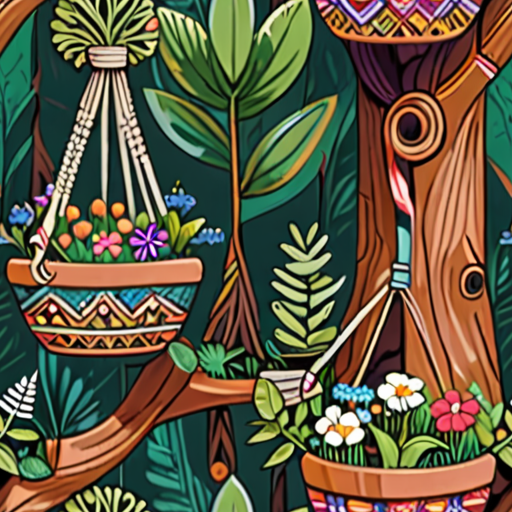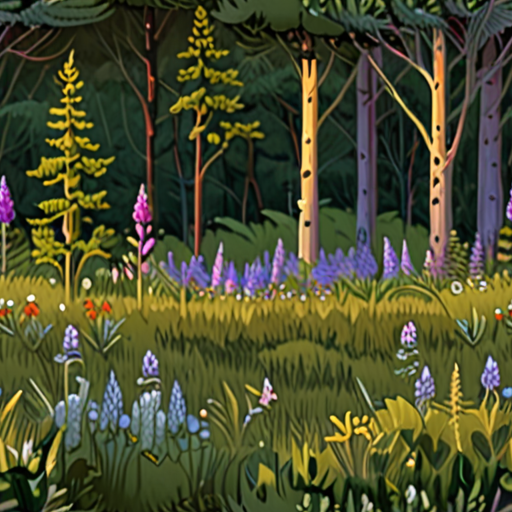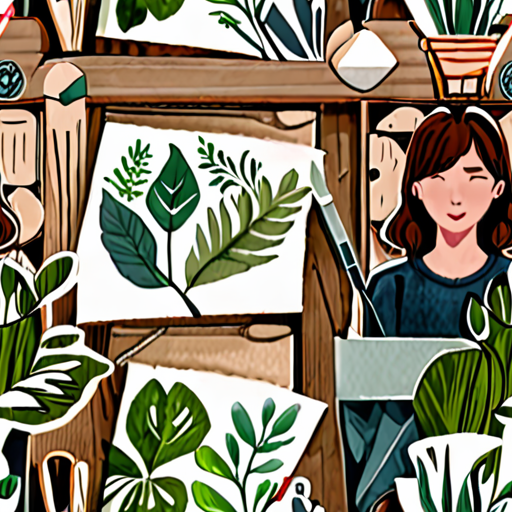As we navigate our daily lives, it’s easy to overlook the impact of our creative pursuits on the environment. However, by embracing eco-friendly craft projects, we can significantly reduce waste, promote sustainability, and cultivate a greener tomorrow. From upcycling old items to creating innovative products from recycled materials, the possibilities for environmentally conscious crafting are endless.

Incorporating Eco-Friendly Materials into DIY Craft Projects
Elevate your creativity while reducing your environmental footprint by incorporating eco-friendly materials into your DIY craft projects.
- Sustainable Materials: Explore alternatives to traditional materials like recycled paper, bamboo, and reclaimed wood.
- Repurposed Items: Get creative with items you might otherwise throw away, such as old jars, cardboard tubes, and fabric scraps.
- Natural Dyes: Use plant-based dyes like turmeric, indigo, and coffee to add color to your projects without harsh chemicals.
- Upcycled Textiles: Transform old clothing, sheets, and towels into unique fabrics for your crafts.
Practical Tips for Incorporating Eco-Friendly Materials
- Research and Plan: Look for sustainable materials and plan your project accordingly to minimize waste and excess.
- Choose Local Sources: Opt for locally sourced materials to reduce transportation emissions and support local economies.
- Get Creative with Repurposing: Think outside the box when repurposing items, and consider combining materials in innovative ways.
- Experiment with Natural Dyes: Try out different plant-based dyes and techniques to achieve unique colors and textures.
Popular Eco-Friendly DIY Crafts
- Macrame Plant Hangers: Use cotton rope, wooden dowels, and natural fibers to create bohemian-inspired plant hangers.
- Recycled Paper Mache: Mix recycled paper with glue and water to create a durable, eco-friendly material for decorative objects.
- Bamboo Wind Chimes: Combine bamboo sticks, metal rings, and natural fibers to create melodious wind chimes.
- Upcycled Jewelry: Transform old keys, bottle caps, and other discarded items into unique, eco-friendly jewelry pieces.
Benefits of Eco-Friendly DIY Crafts
By incorporating eco-friendly materials into your DIY craft projects, you’ll not only reduce your environmental impact but also:
- Save Money: Repurpose and reuse materials to cut down on costs.
- Develop Creativity: Experiment with new materials and techniques to unlock your full creative potential.
- Support Sustainability: Contribute to a more environmentally conscious lifestyle by choosing eco-friendly materials.
Repurposing Old Items into Unique Eco-Friendly Craft Projects
We’re passionate about reducing waste and promoting sustainability through creative upcycling projects.
-
Upcycle Old Furniture
Give new life to discarded furniture pieces by refinishing or repainting them. Consider turning an old pallet into a coffee table or transforming a vintage dresser into a kitchen island.
-
Craft with Recycled Materials
Get creative with materials like plastic bottles, cardboard tubes, and fabric scraps. Turn them into planters, bird feeders, or colorful wall hangings.
-
Create Art from Nature
Collect items from nature like leaves, twigs, and rocks to create beautiful collages or sculptures. You can also press flowers to make delicate art pieces.
-
Making Jewelry from Discarded Items
Transform old keys, bottle caps, or broken jewelry into unique accessories. Get inspired by online tutorials or experiment with different techniques to create one-of-a-kind pieces.
-
Make Home Decor from Repurposed Items
Turn old maps, music sheets, or book pages into decorative wall art. Use glass jars to create stunning centerpieces or transform an old ladder into a room divider.
-
Upcycle Textiles
Breathe new life into old clothes, towels, or bedding by turning them into reusable bags, cleaning rags, or quilts.
-
Make Paper Crafts from Recycled Materials
Transform old newspapers, cardboard boxes, or paper towel rolls into handmade cards, gift boxes, or origami animals.
-
Upcycle Glass Bottles
Turn empty glass bottles into beautiful vases, candle holders, or soap dispensers. Add a personal touch by decorating them with paint or stickers.
-
Make Wind Chimes from Discarded Items
Transform old keys, washers, or metal scraps into melodious wind chimes. Hang them outside to enjoy the soothing sounds of nature.
-
Upcycle Metal Items
Give new life to old metal items like tin cans, wire hangers, or metal pipes. Turn them into coat racks, picture frames, or geometric sculptures.
At Pravylo Project , we believe that creativity knows no bounds, and neither does our passion for sustainability. Join us in our mission to reduce waste and promote eco-friendliness through innovative upcycling projects.

What are the Most Effective Eco-Friendly Craft Project Ideas for Beginners?
I’m excited to share my favorite eco-friendly craft project ideas that are perfect for beginners, helping you reduce waste and boost creativity.
-
Upcycle Old Materials
Transform old cardboard boxes, plastic bottles, and fabric scraps into unique crafts like planters, bird feeders, and decorative wall hangings.
-
Make Your Own Paper
Create handmade paper from recycled materials like old newspapers, cardboard, and cotton linters. Use it for cards, gift wrapping, or art projects.
-
Repurpose Old Furniture
Give new life to old furniture by repainting, restaining, or refinishing it. Upcycle old pallets into coffee tables, headboards, or shelves.
-
Craft with Natural Materials
Explore nature-inspired crafts using leaves, twigs, rocks, and sand. Create beautiful mobiles, wreaths, or collages.
-
DIY Soap and Candles
Mix and match natural ingredients to create nourishing soap and scented candles. Perfect for gifting or personal use.
-
Knit or Crochet with Recycled Yarn
Turn old t-shirts, sweaters, or fabric scraps into cozy blankets, hats, or scarves. Reduce waste and stay warm!
-
Make Your Own Paint
Experiment with natural paint alternatives like turmeric, beetroot, or coffee. Create vibrant artwork without harming the environment.
-
Upcycle Glass Bottles
Transform empty glass bottles into beautiful vases, candle holders, or pen holders. Add a touch of elegance to your home decor.
-
Craft with Recycled Metal
Get creative with metal scraps, turning them into functional items like coat racks, picture frames, or wind chimes.
-
Make Your Own Cards and Gift Tags
Design and print your own greeting cards and gift tags using recycled paper, stamps, and natural dyes.
These eco-friendly craft project ideas are perfect for beginners, promoting sustainability and creativity. Get inspired, get crafting, and reduce waste together!

Simple Yet Impactful Eco-Friendly Craft Project Modifications
To reduce waste and promote sustainability in our creative pursuits, we’ve identified several simple yet impactful eco-friendly craft project modifications.
-
Choose Sustainable Materials
Select materials that are locally sourced, recycled, or repurposed whenever possible. Consider using natural fibers like cotton, hemp, or bamboo for your projects.
-
Optimize Your Workspace
Set up a workspace that minimizes waste and promotes efficiency. Use reusable containers, bins, and trays to store supplies and keep your workspace organized.
-
Repurpose and Upcycle
Get creative with materials you might otherwise throw away. Turn old t-shirts into reusable bags, transform cardboard tubes into plant markers, or upcycle old furniture into unique decorative pieces.
-
Minimize Paper Waste
Switch to digital patterns, tutorials, and instructions to reduce paper waste. Use reusable notebooks or sketchbooks for note-taking and idea development.
-
Emphasize Handmade and Local
Prioritize handmade and local products in your craft projects. Support small businesses and artisans who share your commitment to sustainability.
-
Reduce Energy Consumption
Conserve energy by using LED lights, turning off equipment when not in use, and choosing power-efficient tools.
-
Implement Zero-Waste Policies
Develop a zero-waste policy for your craft projects by avoiding single-use plastics, minimizing packaging, and recycling materials whenever possible.
-
Collaborate and Share Knowledge
Connect with fellow crafters and share knowledge on sustainable practices. Participate in online communities, attend workshops, and engage in local craft fairs to learn from others and stay inspired.
-
Document and Share Progress
Keep track of your progress and share your experiences with others. Document your eco-friendly craft project modifications through blog posts, social media, or video tutorials.
-
Continuously Improve and Adapt
Stay informed about the latest sustainable practices and technologies. Continuously evaluate and improve your craft project modifications to minimize waste and maximize environmental benefits.
Unlocking the Power of Eco-Friendly Craft Projects
I’m excited to share my passion for eco-friendly craft projects with you, and I believe that making the switch can have a significant impact on both the environment and your creative pursuits.
- The Key Differences Between Traditional Craft Projects and Eco-Friendly Alternatives:
- Eco-friendly craft projects often use recycled or repurposed materials, reducing waste and minimizing the carbon footprint associated with traditional crafting methods.
- These projects may incorporate sustainable materials, such as bamboo, hemp, or organic cotton, which are gentler on the environment and promote biodiversity.
- Eco-friendly craft projects frequently involve upcycling or repurposing existing materials, giving old items new life and reducing the demand for new, resource-intensive products.
- The Benefits of Making the Switch:
- By choosing eco-friendly craft projects, you’ll be contributing to a more sustainable future and helping to reduce waste in landfills and oceans.
- You’ll also be developing your creative skills and exploring new techniques and materials, which can lead to increased confidence and self-expression.
- Eco-friendly craft projects often encourage experimentation and innovation, allowing you to think outside the box and push the boundaries of what’s possible with traditional crafting methods.
- Getting Started with Eco-Friendly Craft Projects:
- Browse online marketplaces, thrift stores, or local craft fairs to find unique and affordable materials for your eco-friendly craft projects.
- Experiment with different techniques, such as decoupage, macrame, or natural dyeing, to add texture and interest to your creations.
- Join online communities or local crafting groups to connect with others who share your passion for eco-friendly crafting and learn from their experiences.
- Pravylo Project’s Commitment to Sustainability:
- We’re dedicated to providing high-quality, eco-friendly craft supplies and tutorials that inspire creativity and promote sustainability.
- Our team is passionate about reducing waste and promoting environmentally responsible practices throughout our operations and supply chain.
- We believe that every small step towards sustainability counts, and we’re committed to empowering our community to make a positive impact on the environment through eco-friendly crafting.
- Resources for Further Learning:
- EPA’s Sustainable Materials Management Program offers valuable resources and guidelines for sustainable crafting practices.
- Good On You provides a comprehensive guide to sustainable fashion and lifestyle choices, including eco-friendly crafting options.
- Thrifty Crafty Girl shares inspiring tutorials and tips for upcycling and repurposing materials in creative ways.
Embracing Eco-Friendly Crafting for a Greener Future
As a member of the Pravylo Project community, I invite you to join me on this journey towards a more sustainable future through eco-friendly crafting.
Together, let’s reduce waste, promote creativity, and inspire positive change in our world – one handmade project at a time!

Essential Steps to EcoFriendly Craft Projects
When planning and executing ecofriendly craft projects, prioritizing sustainability while achieving professional-looking results requires careful consideration of several key factors.
-
Choose Sustainable Materials
Select materials that are locally sourced, recycled, or repurposed whenever possible. Consider using natural fibers, organic dyes, and biodegradable adhesives to minimize environmental impact.
-
Design for Reusability
Create projects that can be easily disassembled and reused or repurposed, reducing waste and promoting sustainability.
-
Optimize Energy Consumption
Use energy-efficient tools and equipment, and consider using solar-powered or battery-operated alternatives to reduce carbon footprint.
-
Minimize Waste
Plan projects carefully to minimize excess materials and waste. Use scraps creatively or repurpose them into new projects.
-
Consider Upcycling
Think beyond traditional crafting methods and explore upcycling old or discarded materials into unique, ecofriendly creations.
-
Document Your Process
Keep records of your project development, including materials used, techniques employed, and lessons learned. Share your experiences with others to promote knowledge sharing and collaboration.
-
Engage with the Community
Connect with fellow crafters, share tips and resources, and participate in online forums or local meetups to foster a sense of community and support.
-
Stay Informed and Inspired
Follow ecofriendly crafting blogs, social media accounts, and influencers to stay updated on the latest trends, techniques, and innovations.
-
Promote Sustainability through Education
Share your knowledge and passion for ecofriendly crafting with others, inspiring them to adopt sustainable practices and making a positive impact on the environment.
-
Evaluate and Improve
Regularly assess your projects and processes, identifying areas for improvement and implementing changes to increase efficiency, reduce waste, and enhance overall sustainability.
-
Set Goals and Track Progress
Establish measurable goals for your ecofriendly crafting endeavors, tracking progress and celebrating successes along the way.
Conclusion:
By incorporating these essential steps into your ecofriendly craft projects, you’ll be well on your way to creating beautiful, sustainable works of art while minimizing your environmental footprint.

0 Comments